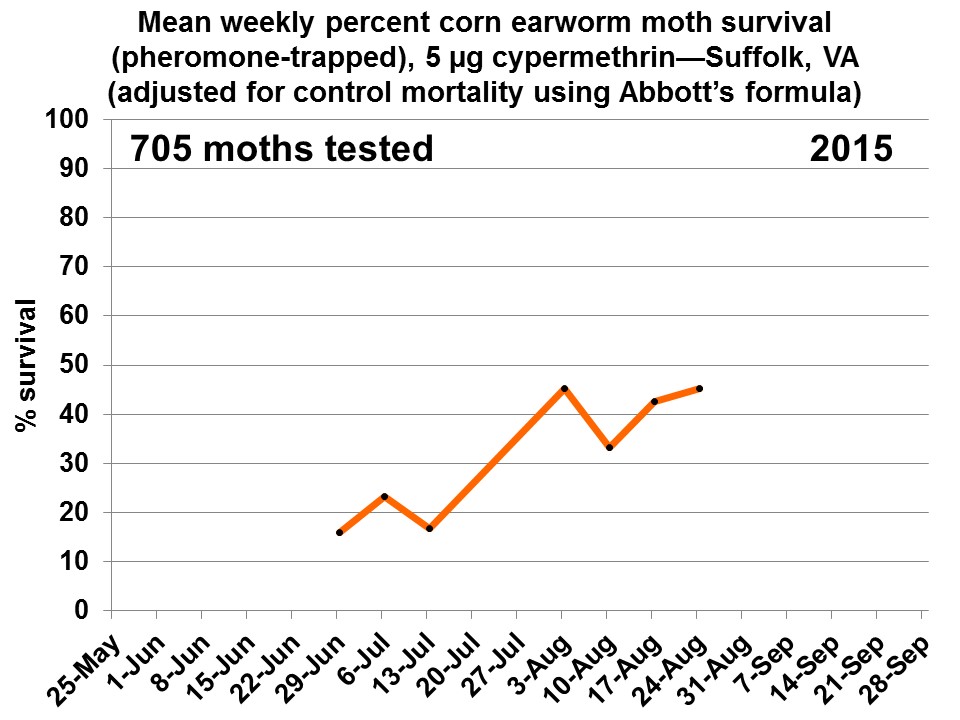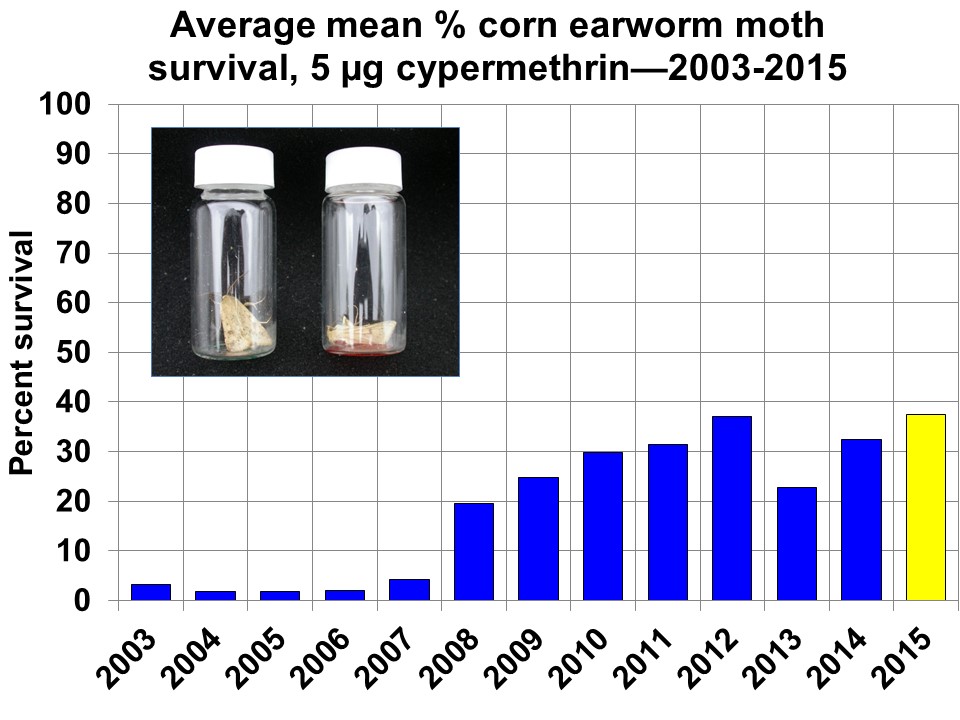The corn earworm moth flight is underway, but is still pretty light compared to past years. Worm numbers are gradually increasing in soybean, peanut, cotton, and sorghum fields, but are still not at economic levels.
Worms are rarely, if ever, an economic threat to peanuts as they feed only on leaves, feed for only a short time, and do not remove enough leaf area to result in any yield loss. So why do most peanut farmers spray their fields for worms when there is no chance that those sprays will improve the yields?
We are finding a few worms in soybean fields, but not many. And, if fields are not in the R5 growth stage (seed forming in the pods), worms are not a threat. They are only a threat when they start eating seed, so if no seed are present, there is no need to treat. If seed are present, a good rule-of-thumb threshold would be to treat if you catch an average of 1 to two per 15 sweeps—but only if seeds are present.
Most cotton, unless very late planted, is mature enough to be safe from worms. At this point in the season, it would be very hard to justify treating most cotton fields for worms.
Sorghum is a different story. Corn earworms are highly attracted to sorghum heads, especially late planted sorghum. For more information on this, read to sorghum insect pest advisory that was just posted.
We are detecting a pretty high level of pyrethroid resistance in the corn earworm moths we are testing. The attached figures show this. With 705 moths tested so far this year, we are seeing an increase in the number surviving with a cumulative average of 37.5 percent survival. From the attached figure, you can see that this is high compared to previous years. Non-pyrethroid insecticides will need to be considered, especially if heavy infestations occur.


